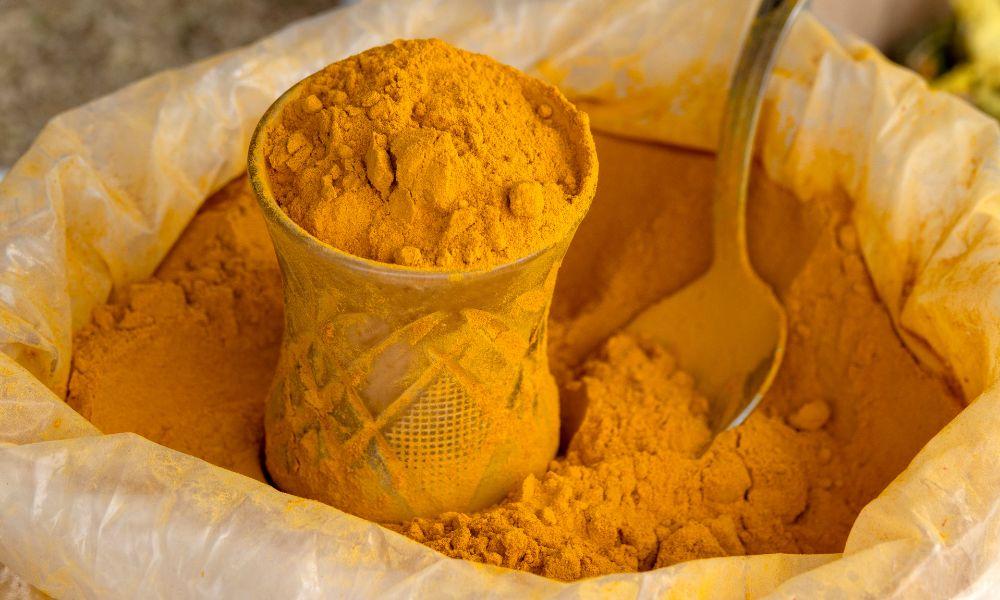Turmeric is a wonderfully versatile spice that offers a plethora of health benefits. Therefore, it’s no surprise that many of us would like to know how to maximize the lifespan of this golden goodness. In this article, we’ll be exploring the ins and outs of turmeric shelf life and sharing some practical tips for proper storage.
What is the average shelf life of turmeric?

Understanding turmeric’s shelf life depends on the form in which you’re using it, whether it be powder or fresh root. In general, the shelf life of turmeric is as follows:
- Turmeric powder: 2-3 years, if stored correctly.
- Fresh turmeric root: 2-3 weeks when refrigerated, or up to 6 months when frozen.
Given that the shelf life significantly varies depending on the form, it’s crucial to store turmeric properly, irrespective of whether it’s a powder or a root.
How do you store turmeric to increase its shelf life?
To extend turmeric’s shelf life, it’s important to practice proper storage techniques. I’ve tested a couple of different methods and found the following to be most effective:
- For turmeric powder: Use an airtight, opaque container like a glass jar to store your turmeric powder. It’s important that the jar is opaque to minimize the exposure to light, which can lead to the degradation of the spice. Make sure to keep it in a cool, dark, and dry place, like a cupboard or pantry. Avoid placing the jar near heat sources like ovens or stovetops, as they can diminish the powder’s potency.
- For fresh turmeric root: Wrap the individual turmeric roots in clean paper towels and store them in a tight-fitting, resealable plastic bag. Place the bag in the crisper drawer of your refrigerator, where the humidity is controlled. This method helps to regulate the moisture around the roots, keeping them fresh for 2-3 weeks.
Can you freeze turmeric to prolong its shelf life?
Yes, freezing turmeric is an excellent way to extend its shelf life, especially for fresh turmeric root. My personal experience with freezing turmeric root has been very successful, and it’s quite simple to do:
- Cut the fresh turmeric root into small, usable portions.
- Wrap each portion individually in plastic wrap or aluminum foil.
- Place the wrapped turmeric pieces in a resealable freezer-safe bag or an.airtight freezer-safe container.
- Label the container with the date and contents before placing it in the freezer.
By following these steps, you can store fresh turmeric root in the freezer for up to 6 months without losing its potency or flavor.
How can you tell if turmeric has gone bad?

My experimentation with turmeric has led me to identify some key signs to determine whether turmeric has expired:
- Color: Fresh turmeric should have a vibrant orange-gold hue, while turmeric powder should have a deep, golden color. If your turmeric is dull or discolored, it may be past its prime.
- Texture: Fresh turmeric root should feel firm to the touch, not soft, mushy, or withered. Turmeric powder should be free-flowing and not clump together.
- Aroma: Turmeric should have a distinctive, warm, and earthy aroma. If you can hardly smell anything, or the scent has a stale or off odor, your turmeric is likely past its shelf life.
- Flavor: If your turmeric tastes weak or flavorless, it’s probably lost its potency and should be replaced.
Keeping these indicators in mind can help ensure that you’re using turmeric that is still good, which is essential for maximizing its benefits.
Does turmeric lose its potency over time?
Yes, turmeric does lose its potency over time. It’s important to note that as the turmeric ages, the active compounds responsible for its therapeutic properties, such as curcumin, gradually degrade. This degradation leads to reduced effectiveness and diminished flavor. Hence, it’s best to use turmeric within its recommended shelf life to obtain maximum benefits.
How to store fresh turmeric root?

If you prefer using fresh turmeric root over the powdered version, follow these steps to store it properly:
- Rinse the fresh turmeric root and pat dry with a clean cloth or paper towel.
- Wrap the root in a clean, dry paper towel.
- Place the wrapped root in a resealable plastic bag or an airtight container.
- Store the container in the crisper drawer of your refrigerator to maintain freshness or in the freezer for long-term storage (up to 6 months), as mentioned earlier in this article.
These steps will help maintain the freshness and potency of your turmeric root, making it readily available whenever you need it.
Can turmeric go bad and make you sick?
Using expired turmeric in your recipes is generally not dangerous and is unlikely to cause any health issues. However, it may lack flavor, color, or potency, ultimately diminishing the overall quality of your dishes.
For optimal flavor and health benefits, it’s best to use turmeric that is within its recommended shelf life. If you’re unsure about using expired turmeric powder, check out our article on “Can I Use Expired Turmeric Powder?” for more information.
Conclusion
In conclusion, proper storage and attentiveness to turmeric’s shelf life are vital factors in maximizing the benefits and flavor of this potent spice. By implementing the tips and techniques shared in this article, you can efficiently store and extend the shelf life of both turmeric powder and fresh turmeric root. So go ahead and make the best use of this golden wonder to add a healthy kick and vibrant hue to your favorite dishes!








